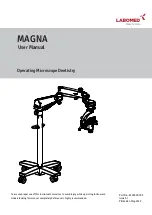
40
3.9.4. MAkInG A tEst In PUlsE MoDE
Set the switch to RCD
.
SET UP
OFF
Connect the measuring cable to the device, then to a socket outlet included in the circuit
protected by the circuit-breaker to be tested.
Rb
R
N
R
L
L
N
PE
Ra
Rb
R
N
R
L
L
N
30 mA
300 mA
Ra
PE
Particular case:
To test a residual current device located down-
stream of another residual current device having a
smaller nominal current, you must use the measur-
ing cable terminated by 3 leads and make the con-
nections shown opposite (upstream-downstream
method).
30 mA
If it is active, the alarm on the tripping time informs the user by an audible signal, that the measurement is outside the range limits,
so there is no need to look at the display unit.
A type S RCD is normally tested at 2 I
D
N
.
The tests at 0.5 I
D
N
are made with the
waveform.
Before starting the measurement, you can configure it by modifying the parameters displayed:
Choice of the nominal current of the residual current device I
D
N
: VAR. (variable: the user programs a value between
6 and 999 mA), 10 mA, 30 mA, 100 mA, 300 mA, 500 mA, 650 mA or 1,000 mA.
Rb
R
N
R
L
L
N
Ra
> 25 m
PE
For a more accurate measurement of the fault voltage,
plant the auxiliary rod at a distance of more than 25
metres from the earth electrode and connect it to the
(R
A
S
EL
) terminal of the device. The
symbol is
then displayed.
At the time of connection, the device detects the positions of the phase (L) and
of neutral (N) with respect to the protective conductor (PE) and displays them. If
necessary, it then automatically switches the L and N terminals so that the test
can be made without modifying the connections of the terminals of the device.
RCD
RCD
RCD
RCD
red
green
blue
Summary of Contents for C.A 6116
Page 1: ...C A6116 Installation TESTER E N G L I S H User s manual...
Page 95: ...95...
















































